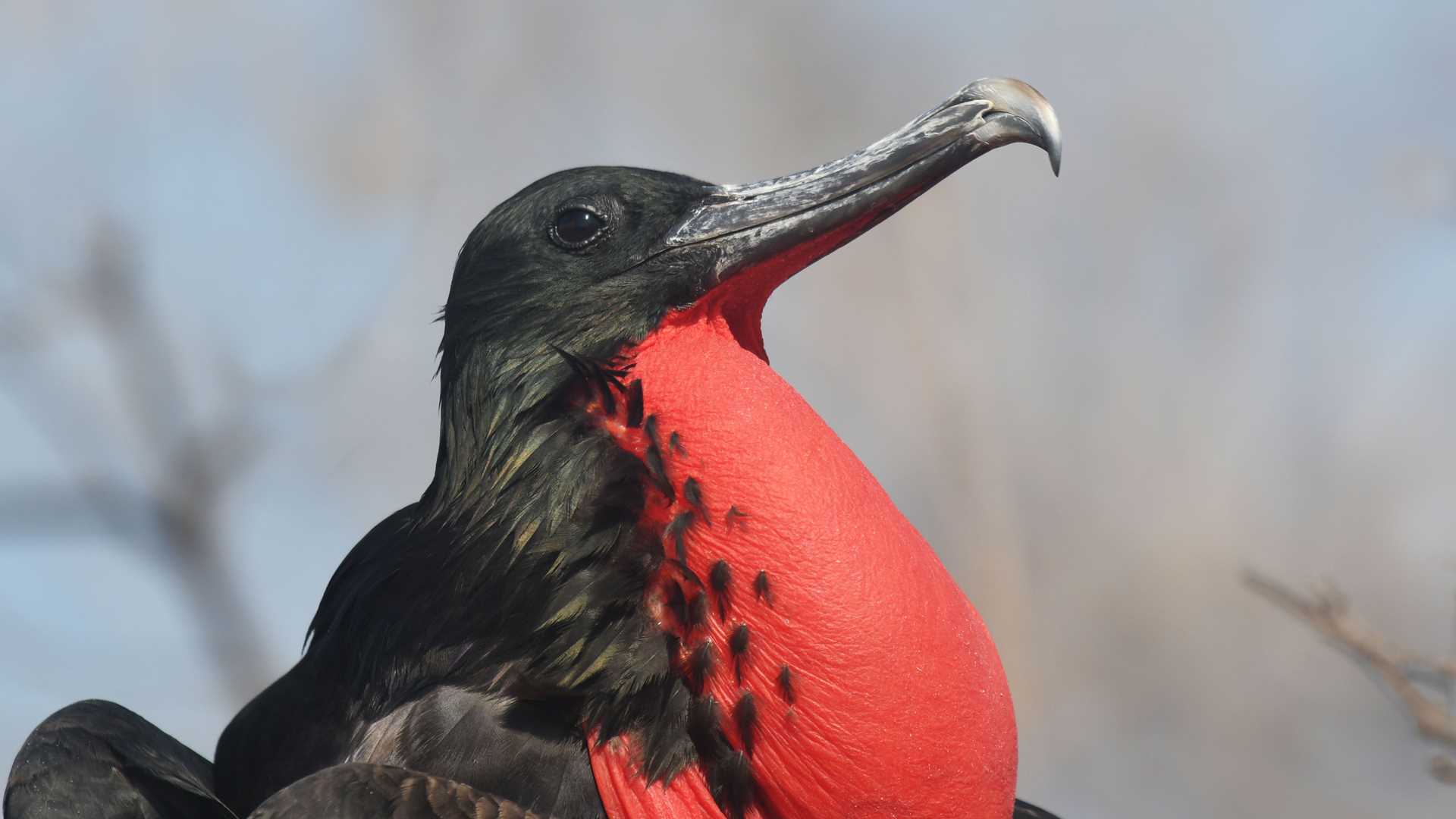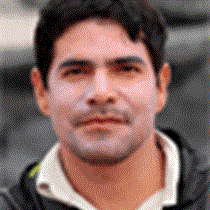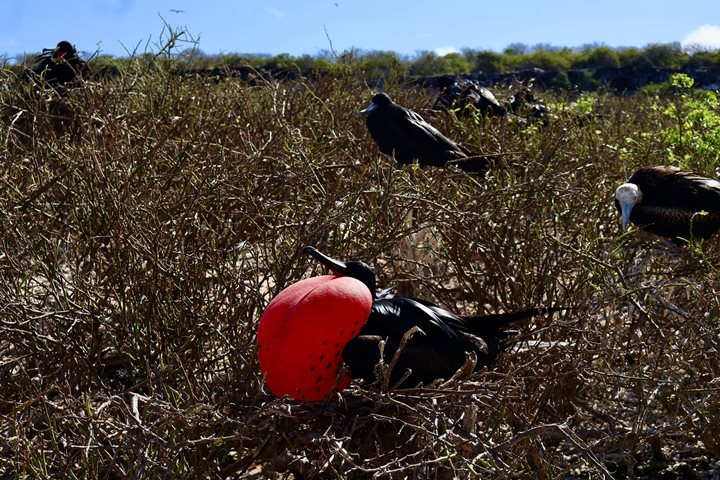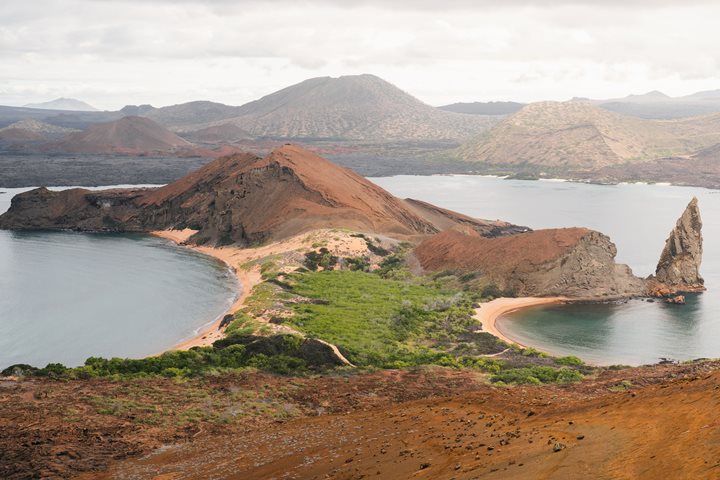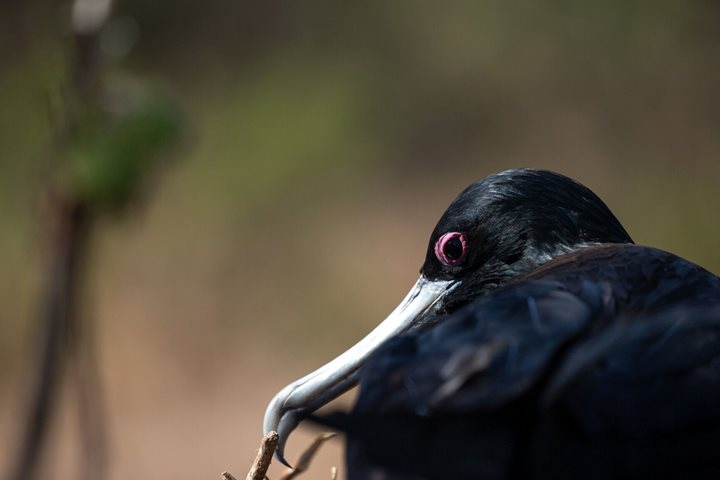We started our first full day of exploration with a wonderful sunrise and perfect weather conditions. In the morning we went ashore to stroll along the trail of North Seymour, and with every step we found a different animal. First we saw the swallow-tailed gulls nesting, then sea lions, marine iguanas, land iguanas, and many frigatebirds nesting on the trees. Some male frigatebirds were displaying their ritual to attract the females, which consists of inflating their red gular sacs, then spreading and shaking their wings while making some rattling sounds. In the afternoon we had a great time snorkeling at Rábida Island, and later walking along an astonishing red beach with colonies of sea lions. Behind the shoreline we saw a flock of pinkish flamingoes nesting at the edge of a brackish water lagoon, while others were feeding on mollusks and microscopic shrimp. The sunset on the horizon was the icing on the cake for such a spectacular day of fun in the paradisiacal Galapagos.
6/13/2025
Read
National Geographic Endeavour II
Genovesa Island
We started the day with excitement as we landed on the beautiful, pristine coast of Isla Genovesa - a true birder’s dream. Along the sandy beaches and steep cliffs of Darwin Bay, we were surrounded by an incredible array of birdlife. Frigatebirds soared closely overhead with their red pouches on full display, while Nazca and blue-footed boobies nested along the rocky ledges. Swallow-tailed gulls called out as we walked past. In the distance, we saw the stoic and elusive short-eared owl. The island was alive with color, sound, and constant movement. Between our excursions to Isla Genovesa, we snorkeled near Prince Philip’s Steps and discovered a vibrant world beneath the waves. Schools of fish swirled around us, a fur seal turned in the water as if dancing on cue, and sea lions relaxed nearby. As our last snorkeling adventure came to a close, we spotted a sea turtle resting calmly in a crevice. As the sun retreated into the sky on our last return to National Geographic Endeavor II, we reflected on the sheer magnitude of what we witnessed on our last full day. Isla Genovesa, like the other islands, gave us a connection to a sacred world. The harmony between land, sea, and sky reminded us how deeply interconnected, vital, and fragile these ecosystems are. Watching birds tend to their nests and marine life swim effortlessly, we were struck by how little space there is between wonder and reverence. We recognized that our journey wasn’t just about observing unique wildlife, it was about feeling part of something grander and beautifully ancient.

